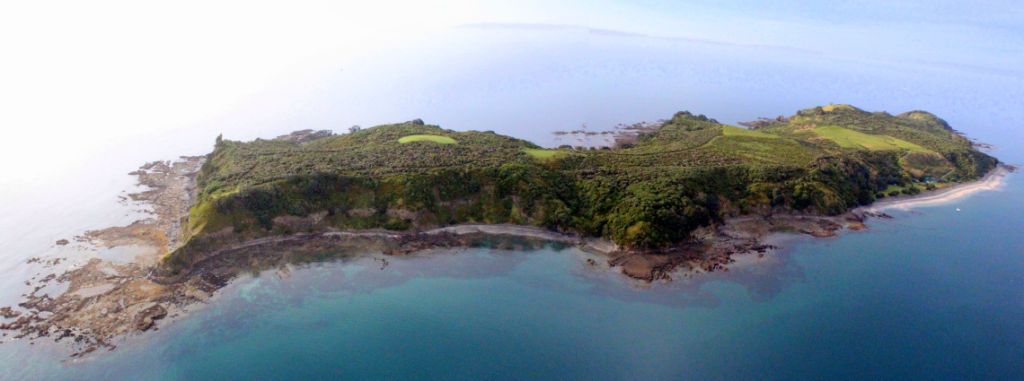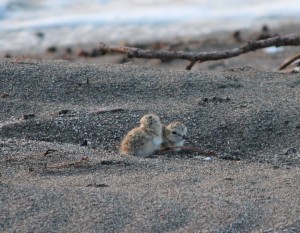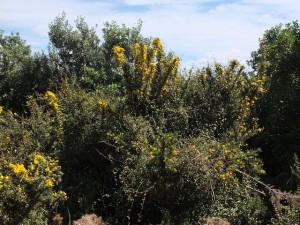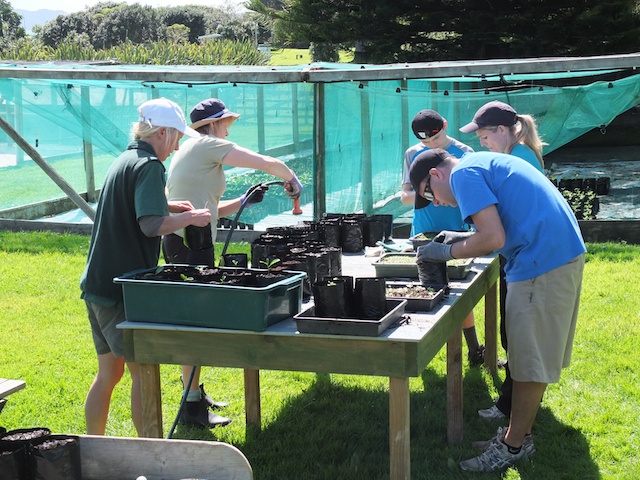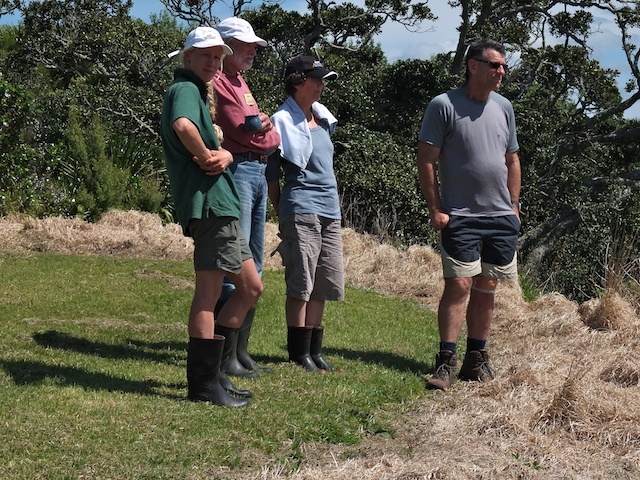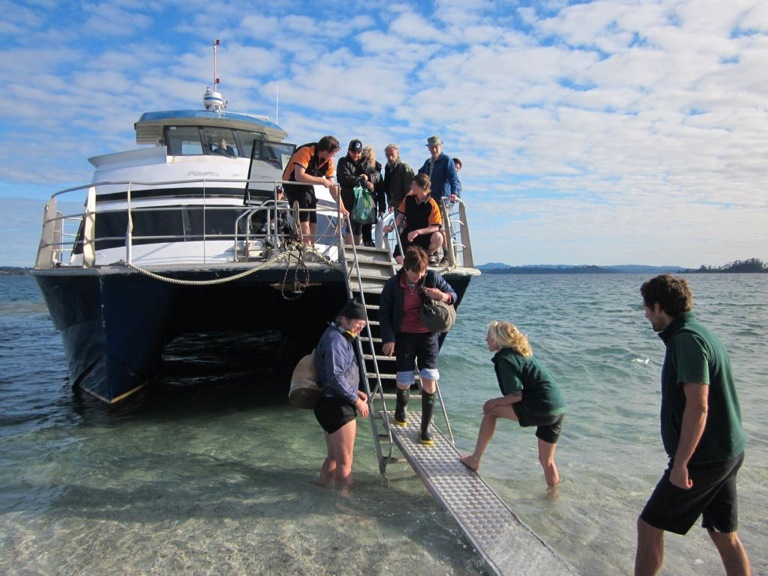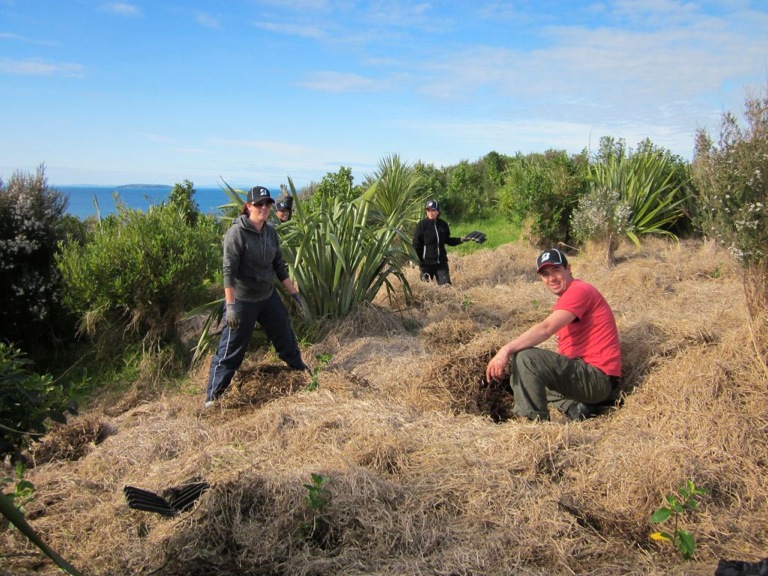While the most noticeable aspect of the restoration of Motuora Island has been the transformation of grass paddocks into bush, behind the scenes is the very important job of controlling weeds. MRS committee member Helen Lindsay leads the weed control program on the island.
In September Helen came out to the island to continue her war against weeds. Over three weeks we (Helen, Sian, and I) managed to grid search a large proportion of the island and remove any weeds lurking within the plantings and bush remnants. We also managed to check some of the cliffs by abseiling with help from Richard Sharp.
However, there are some areas on the island we cannot abseil to and these include 2 rock stacks on the eastern side of the island. To help with the control of weeds in these hard to reach places we enlisted the help of Skywork Helicopters. On a calm day in early October Skyworks came out and sprayed boxthorn, boneseed and a few pine trees that we were unable to reach.
An added bonus of having the helicopter out here was that we were able to get a bird’s eye view of the island and take some aerial photos to compare with earlier shots taken from the air.
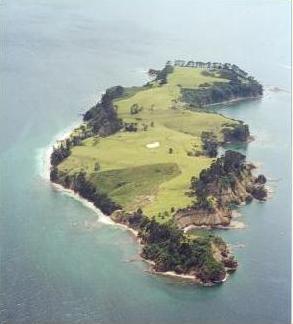
Early aerial photo of Motuora






